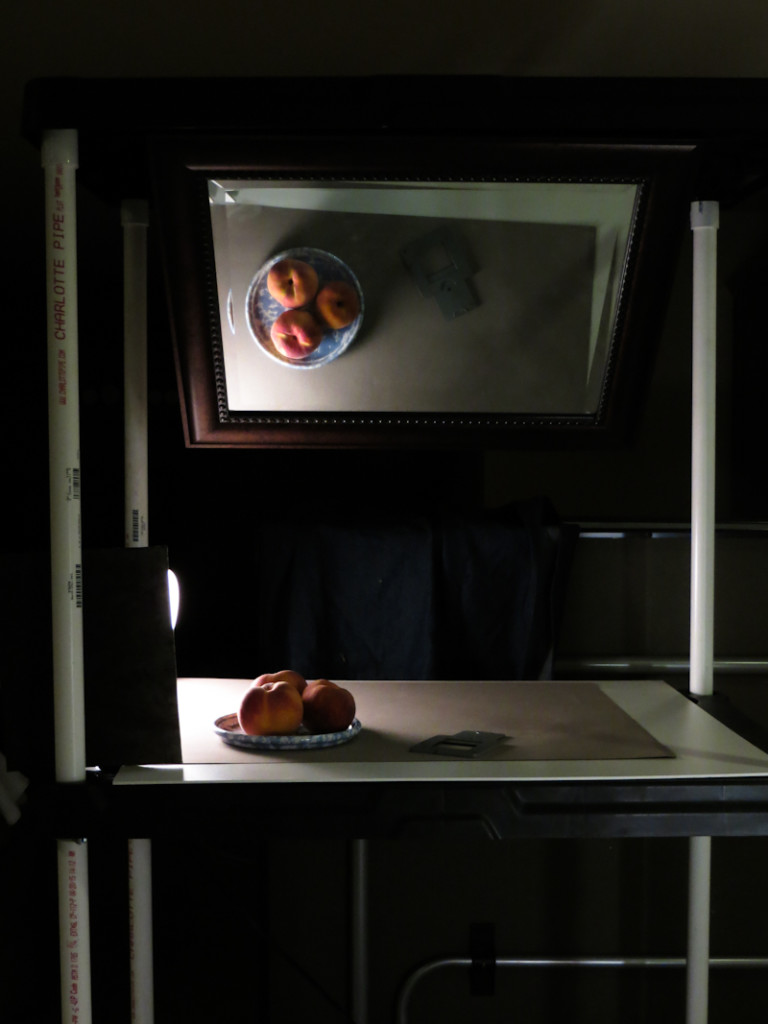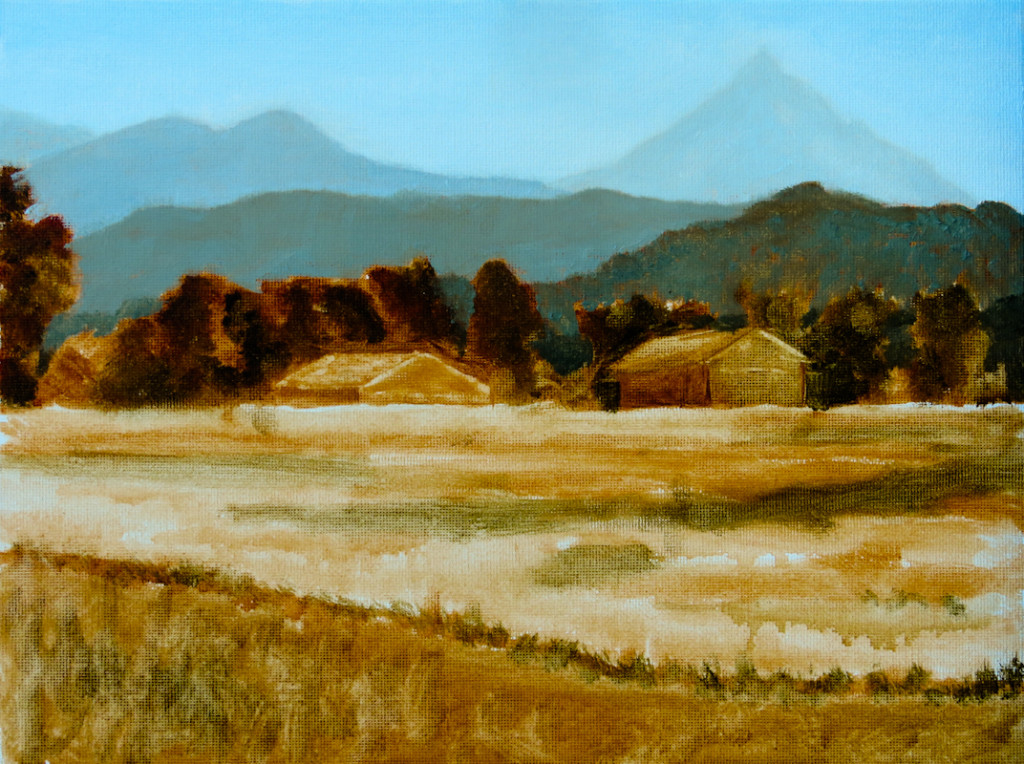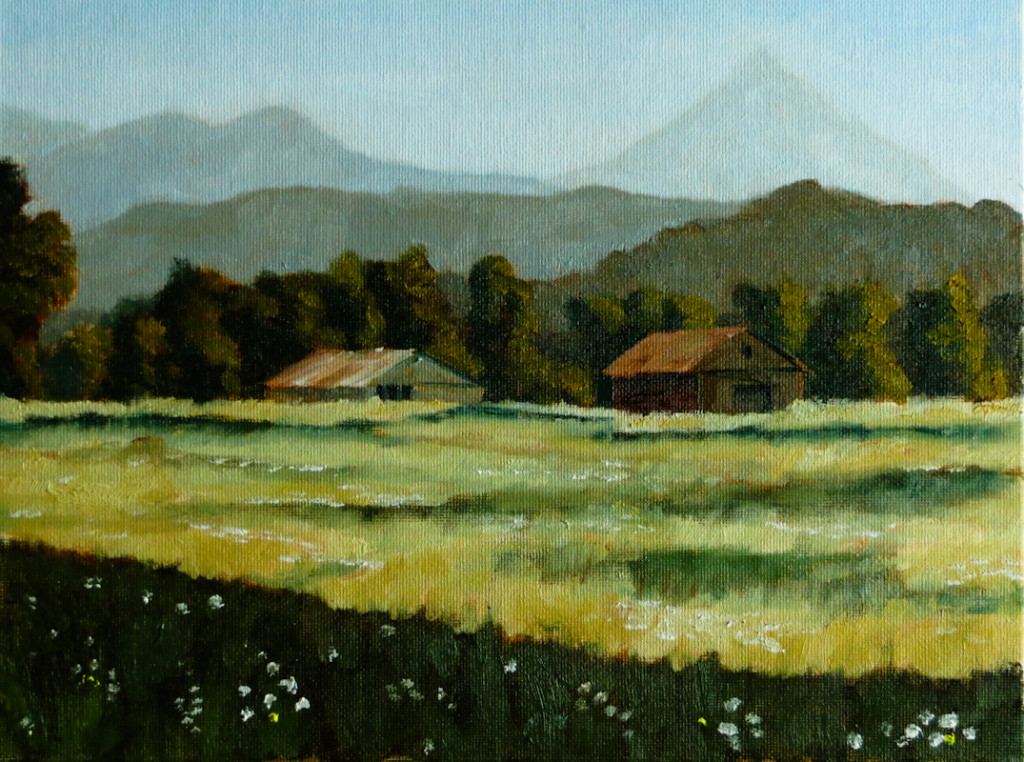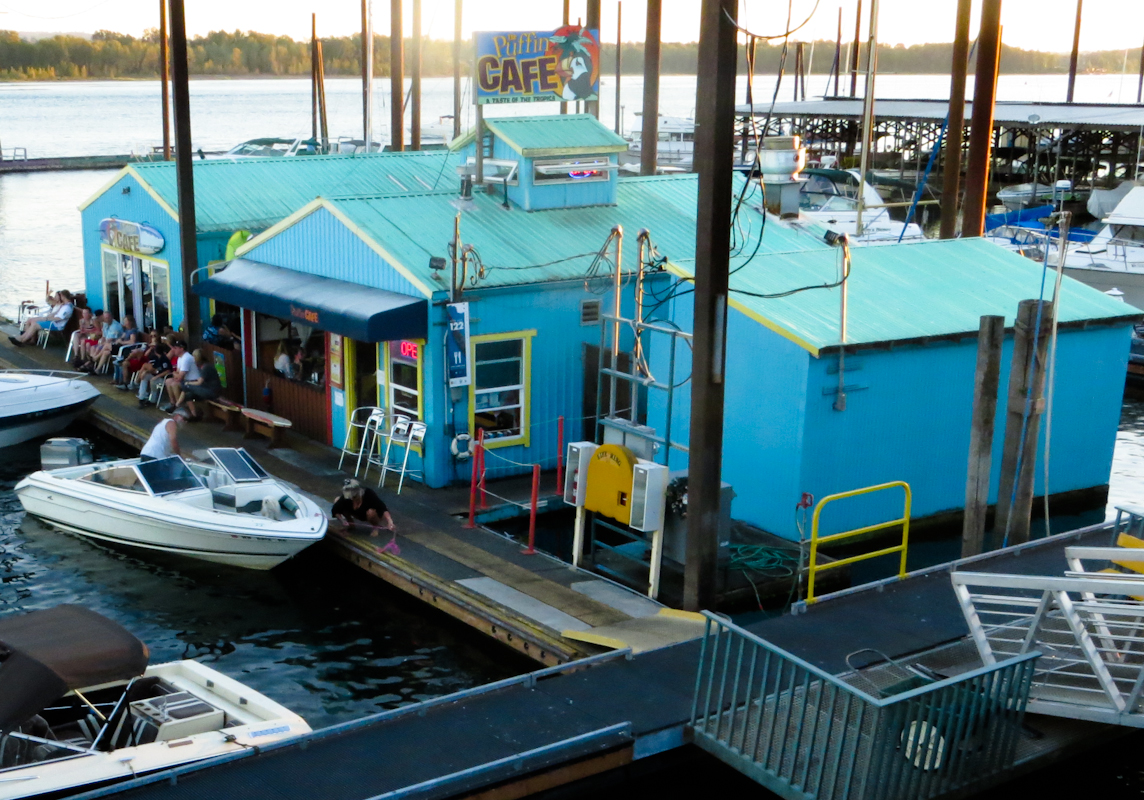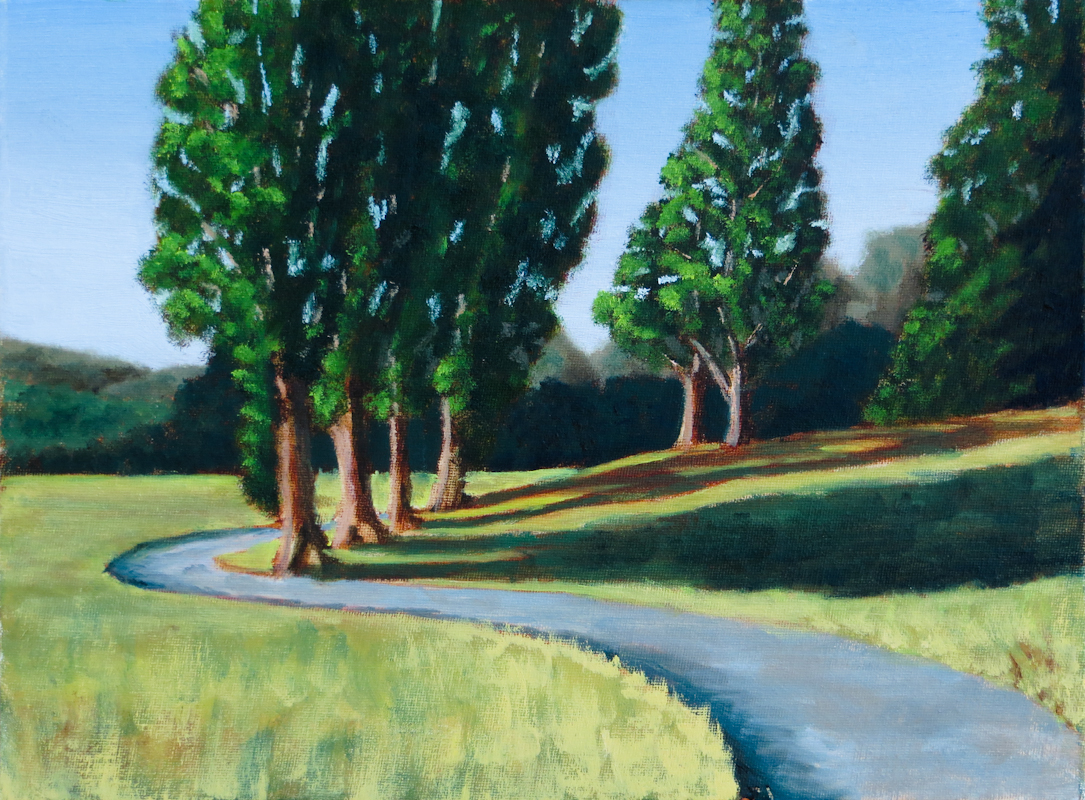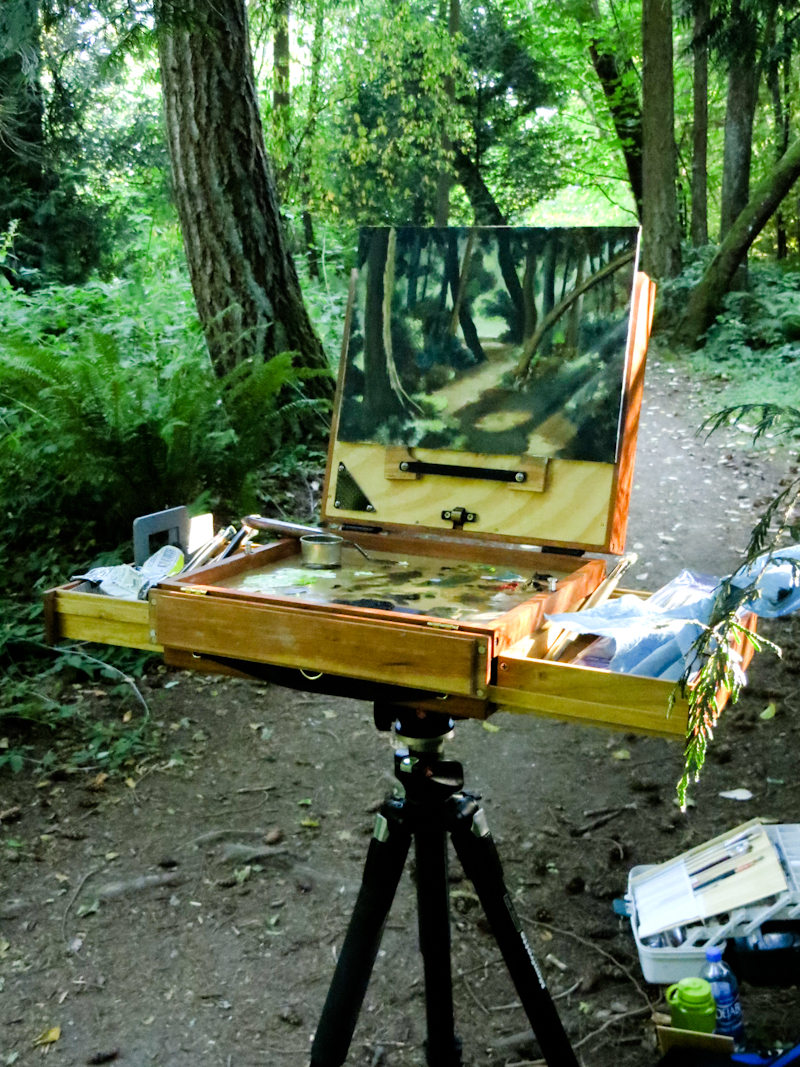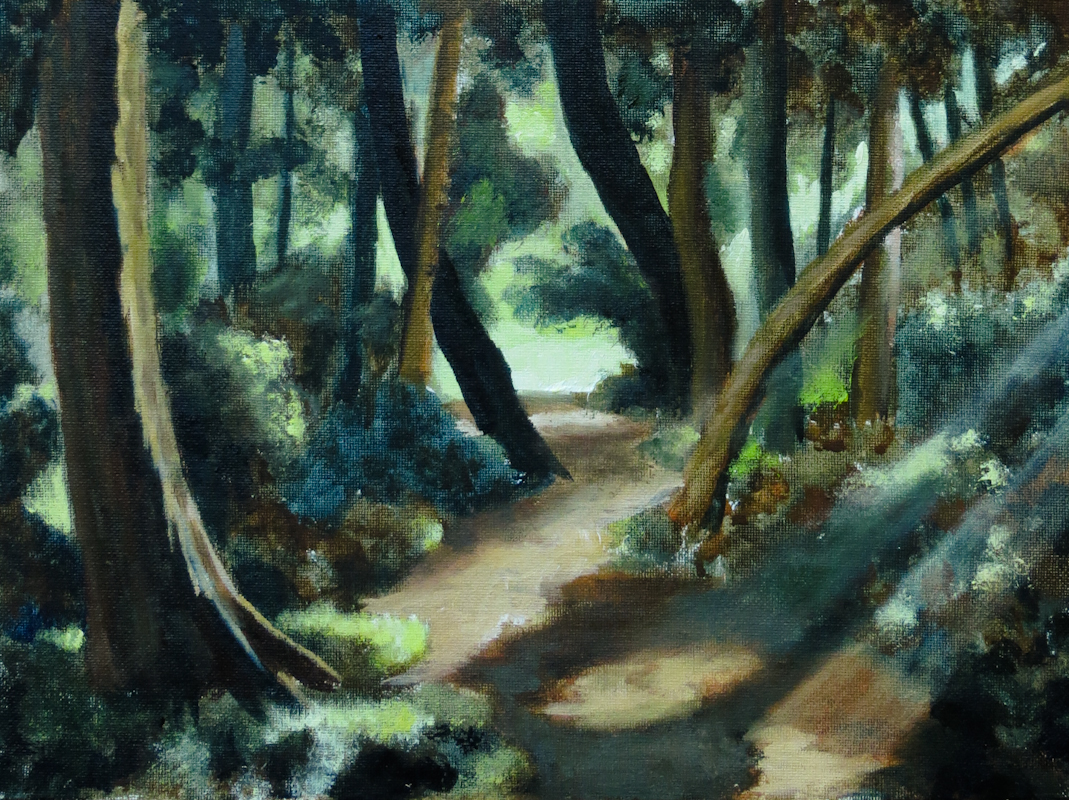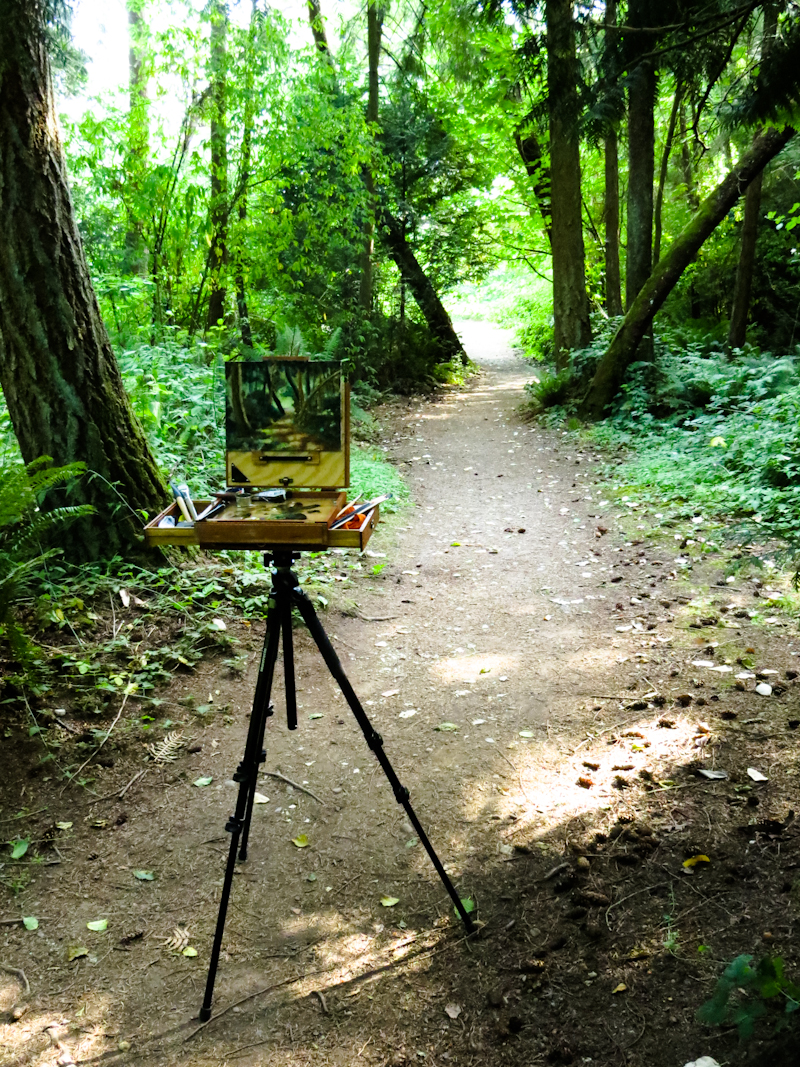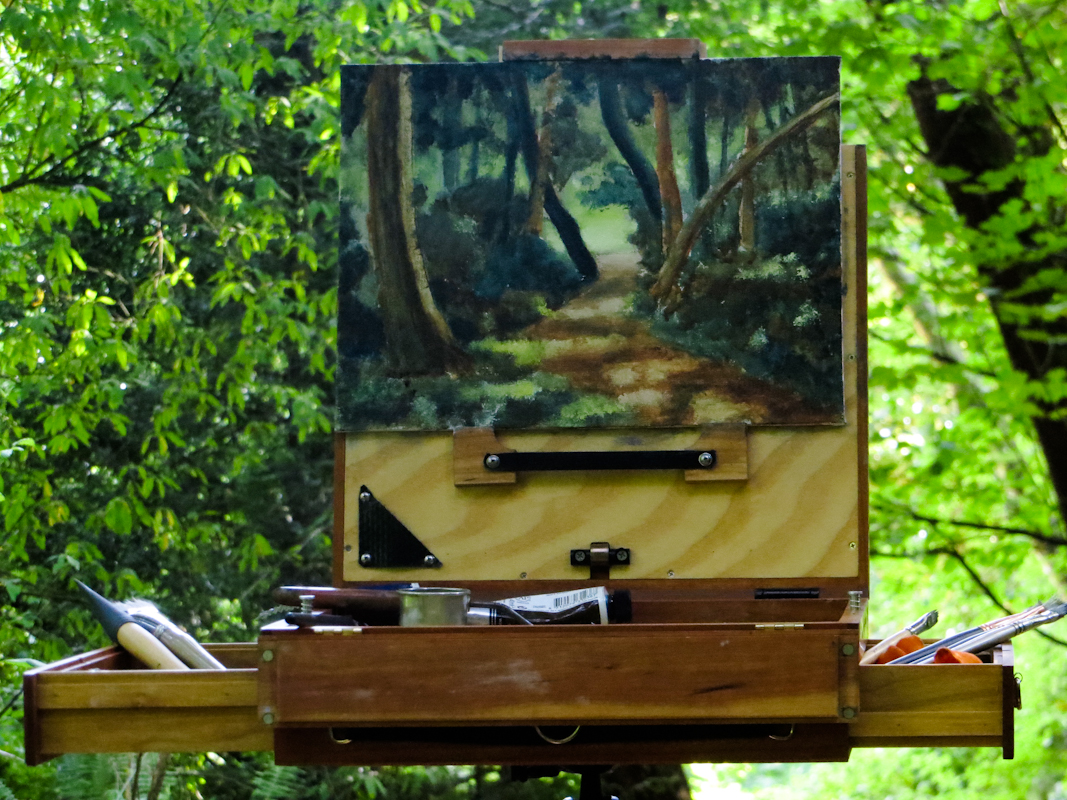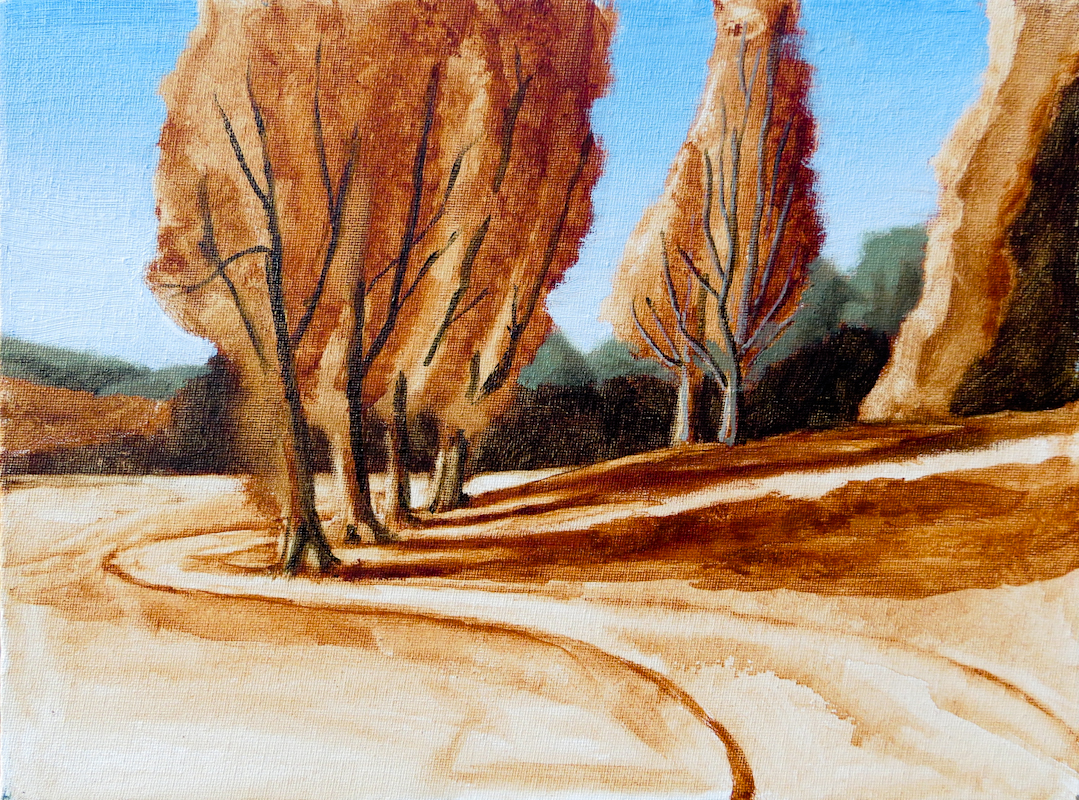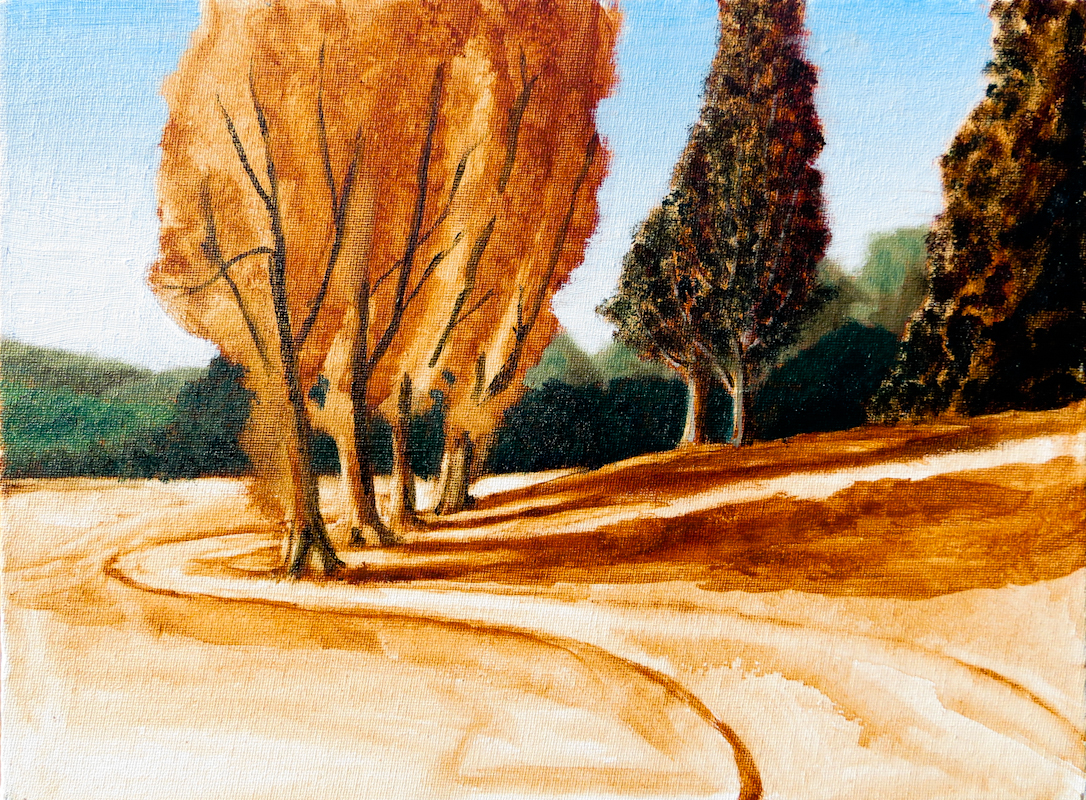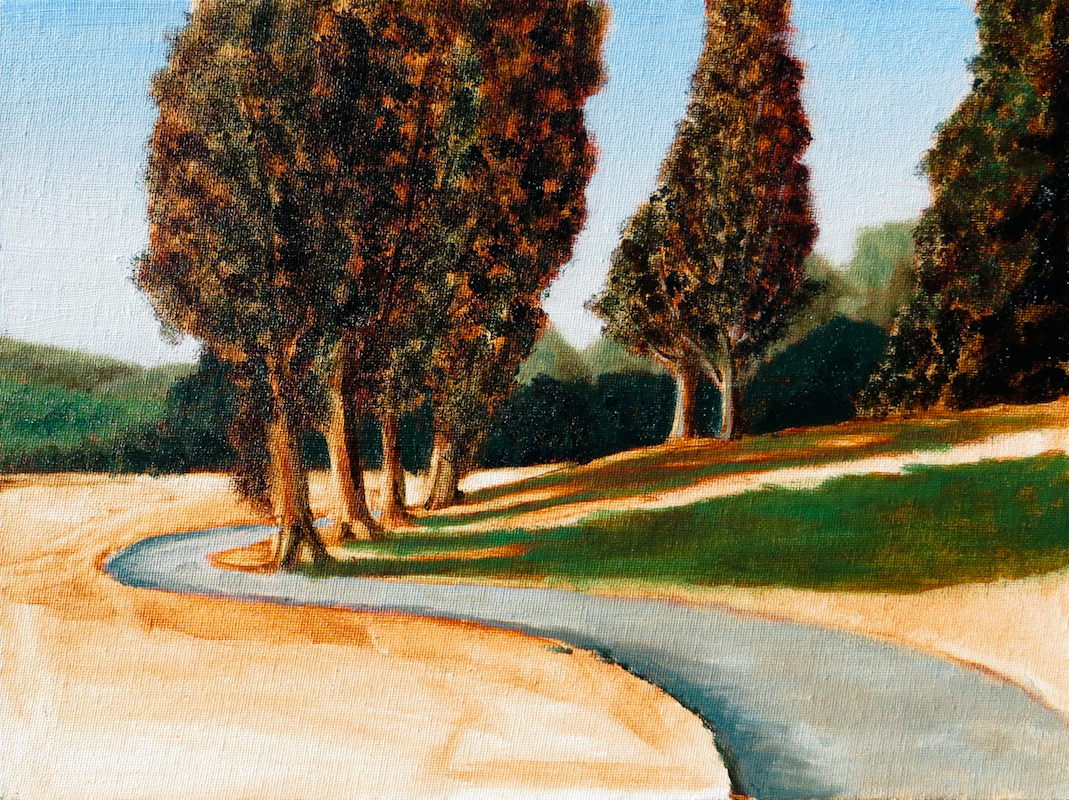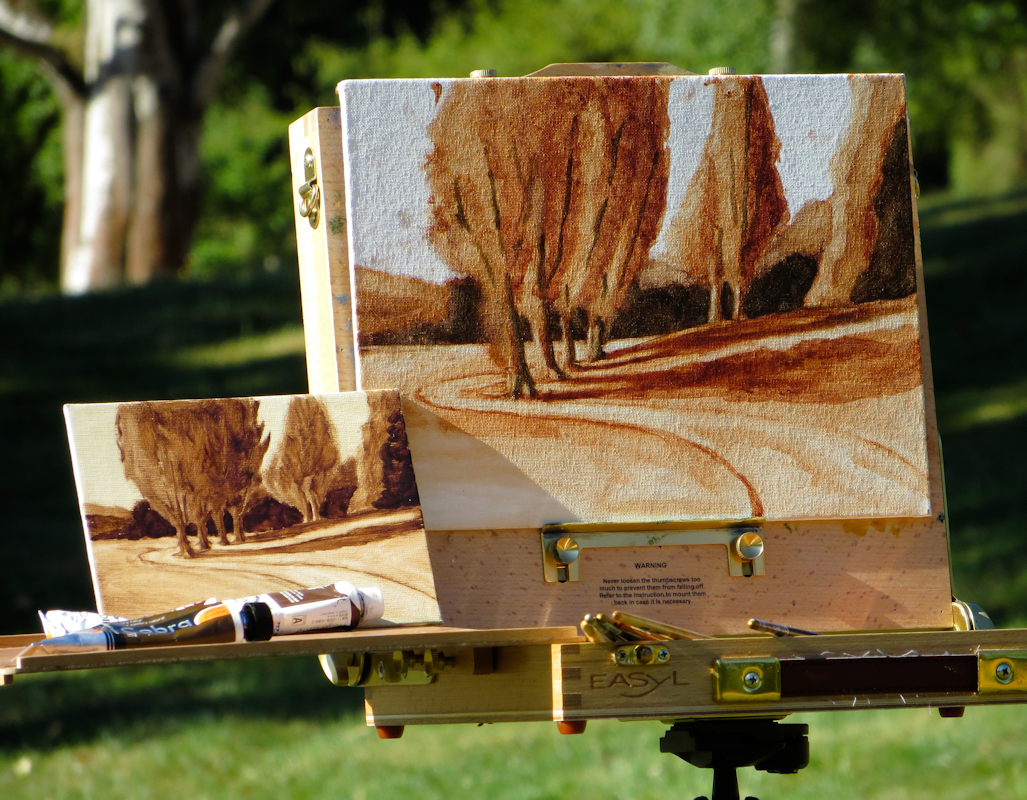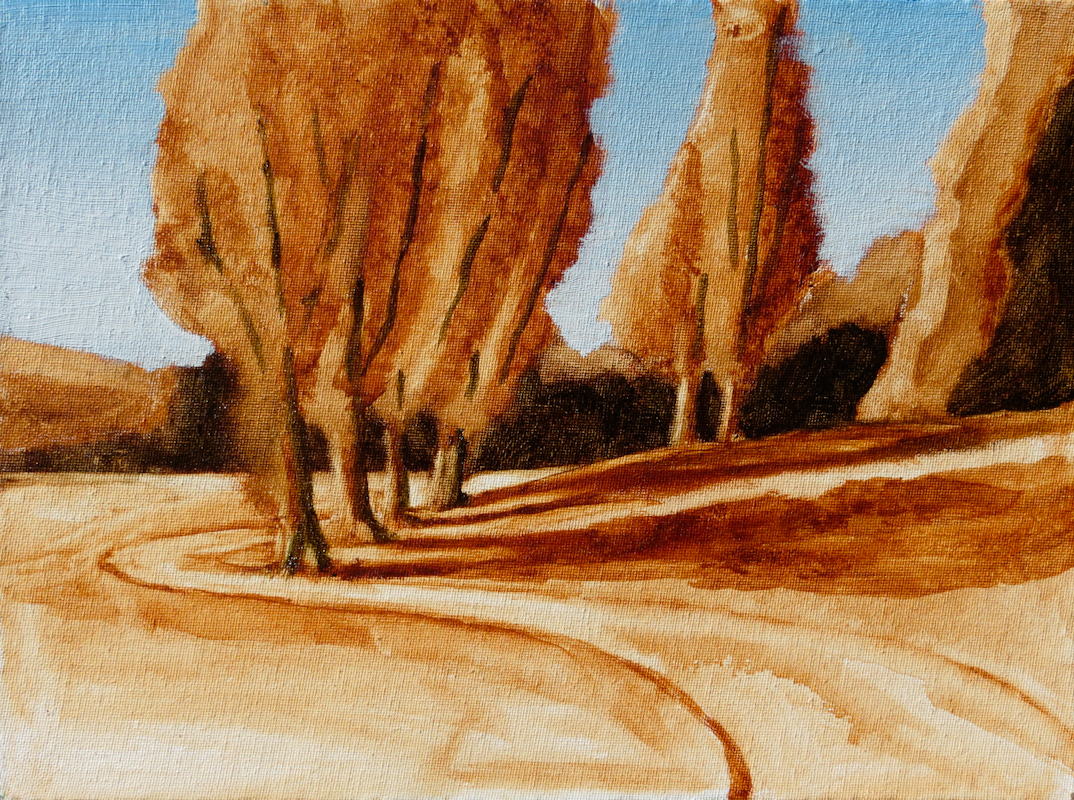Tonight I painted the plate with its pattern of blue splotches and then added some thin color to the underpainting of the peaches. It always amazes me how different the painting is from its underpainting. In the next session, I will paint the peaches closer to their final form and then finish the tabletop.
The base color for the plate was a neutral mixture of Prussian Blue, Permanent Alizarin Crimson, Cadmium Yellow, and Titanium White. The spots used the same colors, but almost no yellow.
For this study, I first painted a neutral plate in shadow and light and then went back and added the blue splotches on top of the wet paint. As I suspected, this approach worked better than starting with a blue plate and painting neutral around the spots.


